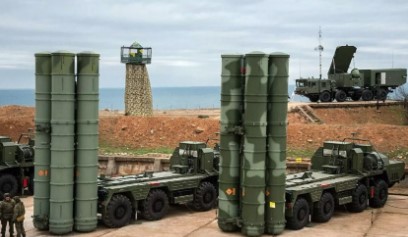India is considering the purchase of additional advanced missile defense systems from Russia, including the newest S-500 system, following the notable performance of its current S-400 units during recent defense operations. Both systems are under active consideration as the country looks to enhance its air defense capabilities across strategic regions.
S-400 Success Spurs Interest in S-500
The S-400 missile systems already in India’s arsenal have demonstrated remarkable efficiency. In a recent operation, the systems intercepted multiple enemy aircraft and destroyed an airborne early warning and control (AEW&C) platform at an approximate distance of 300 kilometers. This interception is regarded as one of the longest surface-to-air kills in history, reflecting the exceptional range, precision, and deterrent capability of the S-400 units.
India initially signed a contract in 2018 for five S-400 units at a cost of $5.43 billion. The contract includes a provision that allows the country to procure additional units under similar terms, adjusted for inflation and currency changes. So far, four of the five systems have been delivered, with the final unit scheduled for handover by September 2026. The proven effectiveness of these systems has encouraged India to explore the procurement of the more advanced S-500 units, which offer even greater range and capability.
Moscow reports S-400 defense shooting down nearly two dozen NATO-supplied missiles
Capabilities of the S-500 System
The S-500 missile system counters a broad spectrum of airborne threats, including ballistic missiles, hypersonic weapons, low-flying cruise missiles, and enemy aircraft. Compared to the S-400, the S-500 extends operational reach, intercepting ballistic targets at ranges of up to 600 kilometers and engaging air threats at distances of up to 500 kilometers.
In addition to long-range interception, the system targets objects at altitudes of 180–200 kilometers and tracks up to ten hypersonic ballistic targets simultaneously. It also includes anti-satellite capabilities, enabling it to engage threats from space as well as atmospheric targets. This versatility makes the S-500 a critical asset for defending against modern, fast-evolving threats.
U.S. softens on S-400 standoff — Türkiye’s F-35 return back on the table
The S-500 has already undergone successful testing in Russia, where it intercepted fast-moving ballistic targets during controlled trials. These tests demonstrated the system’s advanced detection, tracking, and interception technology, confirming its ability to engage both current and emerging aerial threats. Russian officials have indicated that India could be among the first countries to acquire the S-500 once the system becomes available for export.
Strategic Importance for India
Acquiring the S-500 system would significantly strengthen India’s layered air defense network. The combination of existing S-400 units and new S-500 systems would allow India to detect, track, and neutralize a wide array of airborne threats from long distances. Together, these systems provide a comprehensive shield capable of safeguarding both civilian and military assets.
The S-400 systems already act as a strong deterrent, protecting large areas and critical infrastructure from potential air and missile attacks. By adding the S-500, India would enhance its defensive coverage, addressing faster and more sophisticated threats such as hypersonic missiles and advanced ballistic weapons.
🛑 S-400 failure? 39 drones breach defenses as explosions rock Sochi Oil Depot in overnight assault
Other air defense assets coordinate with both S-400 and the newer system, which provide overlapping coverage across multiple ranges and altitudes. This layered defense allows the military to intercept potential threats at various stages of approach, enhancing response time and operational effectiveness.
By pursuing the acquisition of additional S-400 units alongside the advanced system, India is preparing one of the most extensive upgrades to its missile defense infrastructure in recent years. The combination of proven S-400 systems and these new units would create a robust and resilient air defense shield, capable of countering contemporary threats in the sky and beyond.

